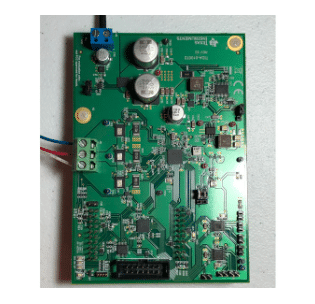The aim is to provide a compact system that supports rapid motor acceleration and deceleration, which is essential in respiratory applications.

This reference design is tailored for medical machines that assist with patient respiration, such as ventilators, which often require motors and valves. Ventilators use motors to generate pressurized air and a system of valves to control airflow, aiding in respiration. They can also be integrated with anaesthesia delivery systems for patient sedation, involving additional valves for drug mixing and protection. These ventilators find application in various settings, including hospitals, institutions, transport, and homes.
The design TIDA-010072 by Texas Instruments incorporates three drive mechanisms for ventilators: bellows, piston, and turbine, each with its unique air compression method, controlled by servo valves or motors. Key features of the design include fast acceleration and deceleration capabilities of up to ±200 kRPM/s, a wide input voltage range of 6-28 V to accommodate both regulated line and battery power with protective measures against surge, over-current, and reverse polarity. It uses the DRV8323RS motor driver for off-board field-oriented control (FOC) to ensure quiet and efficient air generation, along with integrated driver protection features like under-voltage lockout (UVLO), overcurrent, and overtemperature protection. Additionally, it employs dual DRV8847 H-bridge stepper drivers to control six solenoid valves.
The output voltage specifications for this design are a minimum input voltage of 6V, a maximum input voltage of 28V, a nominal output voltage of 12V, a maximum output current of 2A, and an output power of 24W. The design is non-isolated, with a DC input type and a topology that includes boost-synchronous and buck-synchronous. This reference design is particularly suited for the industrial sector, with a specific focus on ventilators.TI has tested this reference design. It comes with a Bill of Material (BOM), schematics, test reports, PCB layout, Gerber files, etc. You can find additional data about the reference design on the company’s website. To read more about this reference design, click here.
The post Reference Design For Air Blower And Valve Control System In Respiratory Applications appeared first on Electronics For You.
View more at https://www.electronicsforu.com/electronics-projects/reference-design-for-air-blower-and-valve-control-system-in-respiratory-applications.
Credit- EFY. Distributed by Department of EEE, ADBU: https://tinyurl.com/eee-adbu
Curated by Jesif Ahmed